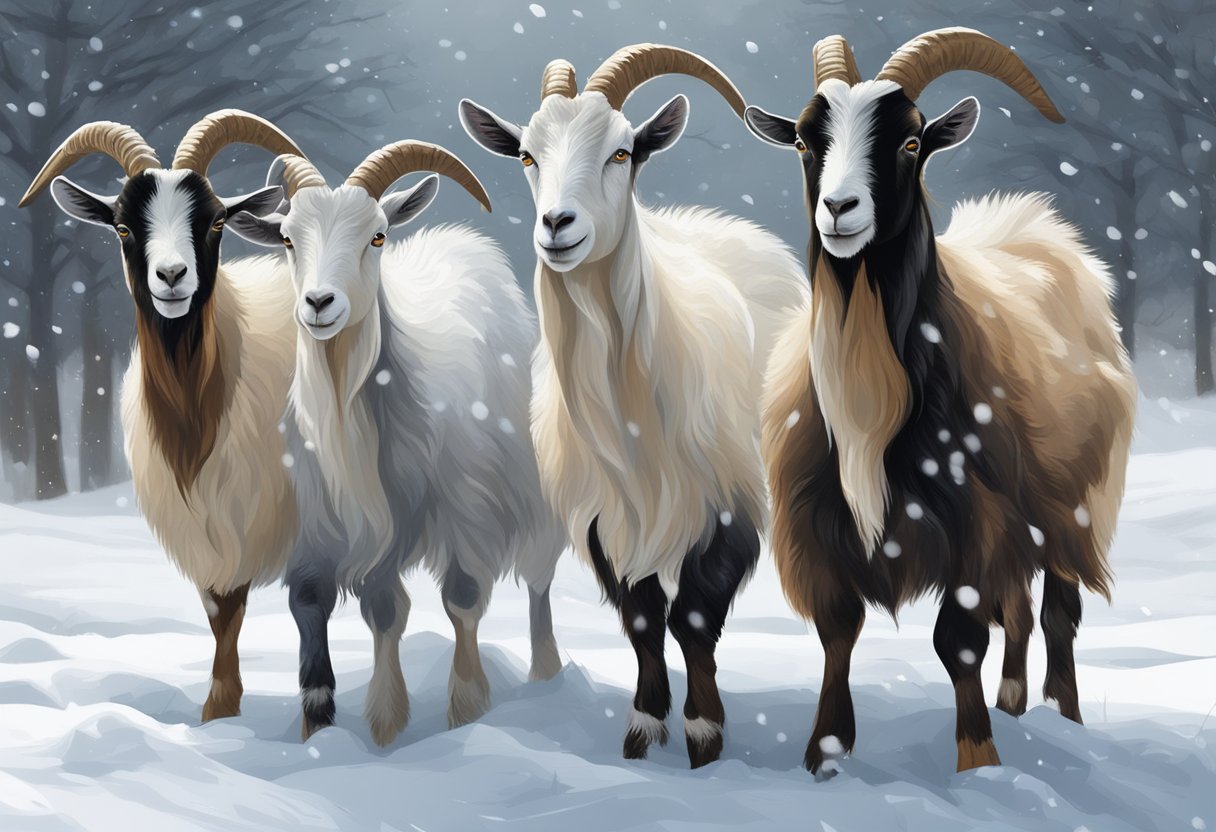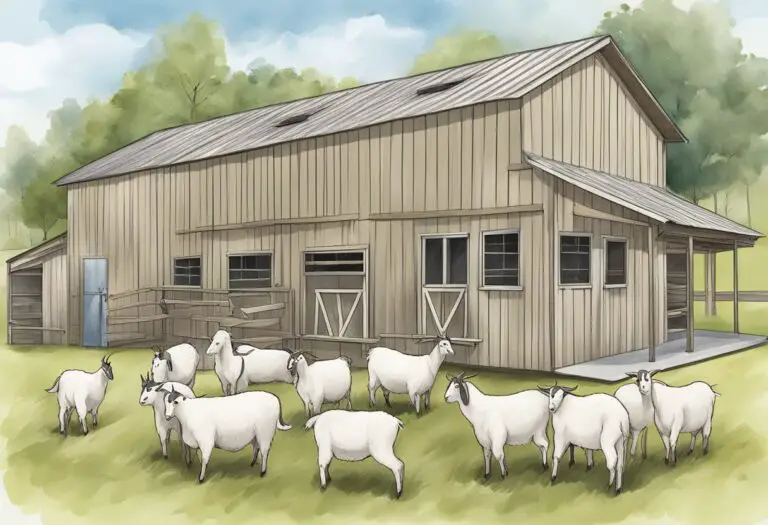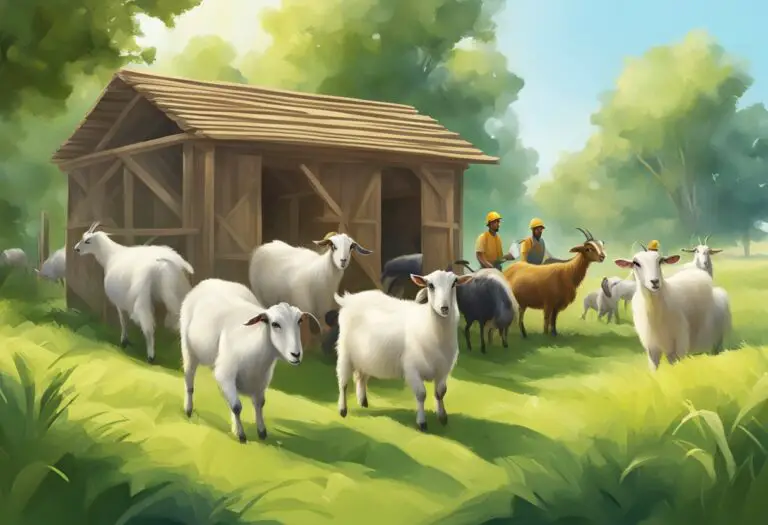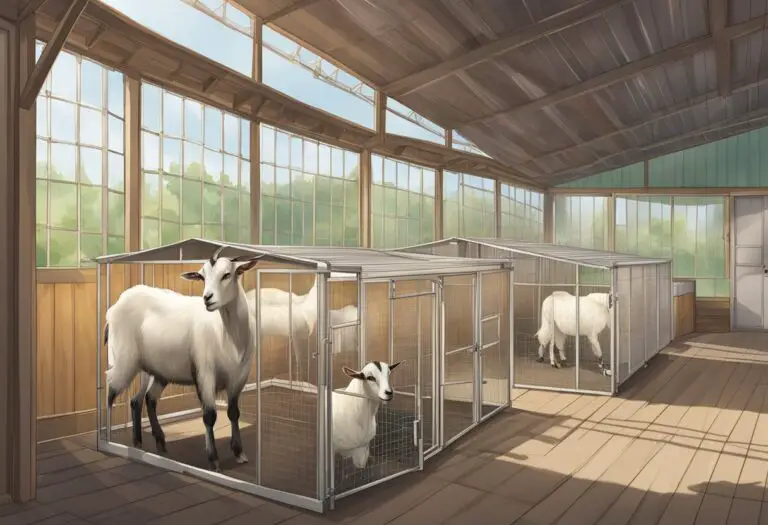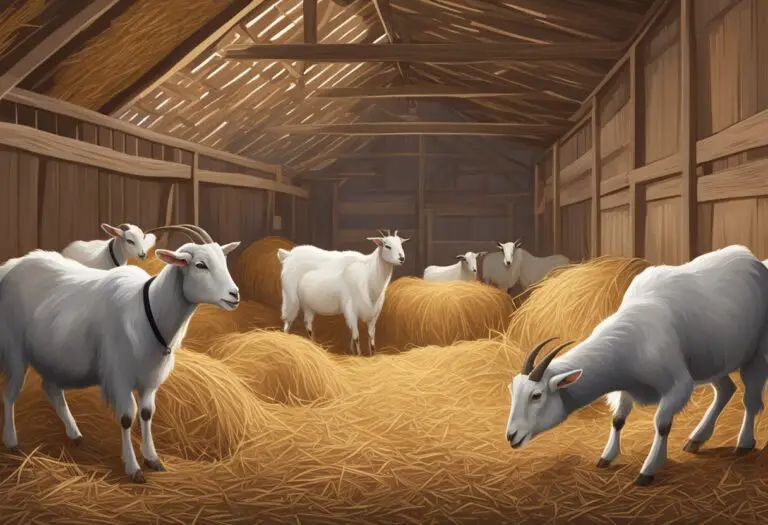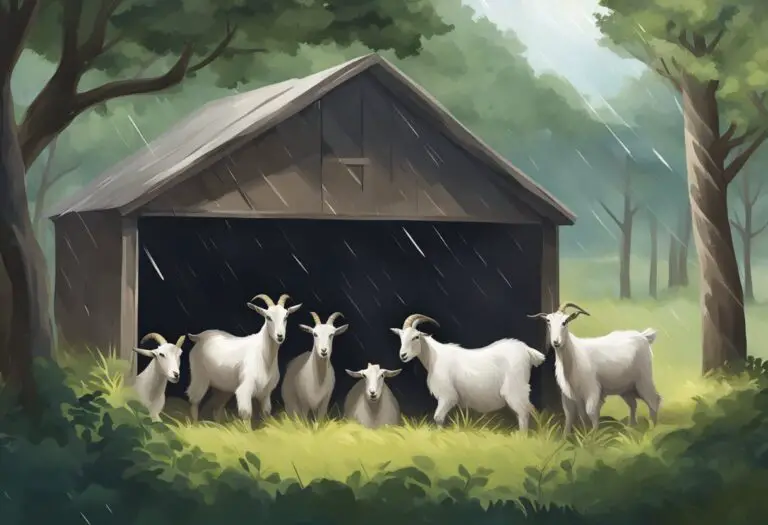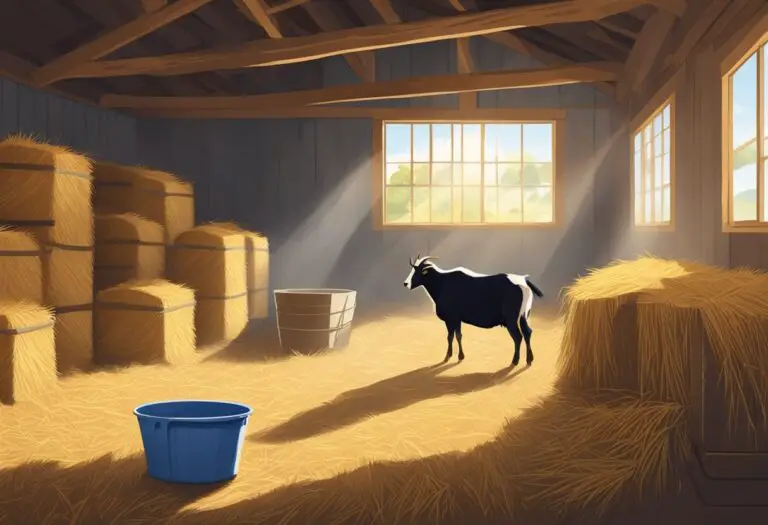Are Goats Susceptible to Extreme Weather Conditions? A Comprehensive Overview
Goats are a common livestock animal that are found in many parts of the world. They are known for their ability to adapt to a wide range of environments and are often kept for their milk, meat, and wool. However, one question that many people have is whether goats are susceptible to extreme weather conditions.
Goats are hardy animals that can tolerate a wide range of temperatures. They are able to survive in both hot and cold climates, and are known for their ability to thrive in arid and mountainous regions. However, despite their adaptability, goats can still be affected by extreme weather conditions such as heat waves, cold snaps, and severe storms. In some cases, these conditions can be life-threatening for goats, particularly if they are not properly cared for.
Goat Physiology and Weather Adaptability

Coat Characteristics
Goats have a unique coat that helps them adapt to extreme weather conditions. Their coat is composed of two layers, the outer layer is made up of long guard hair, while the inner layer is made up of fine wool. This combination of hair and wool helps to insulate the goat’s body, keeping them warm in cold weather and cool in hot weather. Additionally, goats have the ability to fluff up their coat to trap air, which helps to regulate their body temperature.
Metabolic Response to Temperature
Goats have a high metabolic rate, which means they generate a lot of body heat. This makes them well-suited to colder climates. However, goats can also adapt to warmer climates by sweating and panting to release excess heat. They also have the ability to reduce their metabolic rate in extreme heat, conserving energy and reducing the amount of heat their body generates.
In conclusion, goats have a unique physiology that allows them to adapt to extreme weather conditions. Their coat characteristics and metabolic response to temperature make them well-suited to survive in both hot and cold climates.
Impact of Extreme Cold on Goats

Goats are hardy animals that can tolerate a wide range of temperatures, but extreme cold can pose a threat to their health and well-being. In this section, we will explore the impact of extreme cold on goats and what measures can be taken to protect them.
Hypothermia Risks
Hypothermia is a condition that occurs when an animal’s body temperature drops below normal levels. Goats are particularly susceptible to hypothermia when exposed to extreme cold, especially if they are wet or have inadequate shelter. Symptoms of hypothermia in goats include shivering, lethargy, and a drop in body temperature.
To prevent hypothermia, it is important to provide goats with adequate shelter, bedding, and protection from the elements. Goats should have access to a dry, draft-free shelter that is well-insulated and large enough to accommodate their size. Bedding should be clean, dry, and changed regularly to prevent moisture buildup, which can increase the risk of hypothermia.
Shelter and Bedding Requirements
In addition to providing adequate shelter and bedding, there are several other measures that can be taken to protect goats from extreme cold. These include:
- Providing access to fresh, clean water at all times
- Feeding a high-quality diet that is rich in nutrients and energy
- Monitoring goats regularly for signs of hypothermia or other health issues
- Providing additional heat sources, such as heat lamps or heated water buckets, if necessary
By taking these measures, goat owners can help ensure that their animals stay healthy and comfortable even in the coldest of temperatures.
Impact of Extreme Heat on Goats

Heat Stress Factors
Goats are highly susceptible to heat stress, which can be caused by a combination of factors such as high temperature, humidity, and solar radiation. When exposed to high temperatures, goats tend to reduce their feed intake, which can lead to weight loss and reduced milk production. Additionally, heat stress can cause respiratory distress, dehydration, and even death if left untreated. It is therefore important for goat keepers to understand the various factors that contribute to heat stress and take appropriate measures to protect their animals.
Hydration and Cooling Needs
One of the most important measures to prevent heat stress in goats is to ensure that they have access to clean and fresh water at all times. During hot weather, goats may drink more water than usual, and it is important to monitor their water intake to ensure that they are adequately hydrated. Providing shade and ventilation in the goat housing area can also help to reduce heat stress by allowing the goats to cool down naturally. Additionally, goat keepers can use fans and misting systems to provide additional cooling to their animals.
In conclusion, goats are highly susceptible to heat stress, and it is important for goat keepers to understand the various factors that contribute to heat stress and take appropriate measures to protect their animals. Providing clean and fresh water, shade, ventilation, and cooling systems can help to prevent heat stress and ensure the health and productivity of goats during extreme weather conditions.
Seasonal Weather Challenges for Goats

Spring and Autumn Transitions
Spring and autumn are transitional seasons, and the weather can be unpredictable. During these seasons, goats may experience sudden changes in temperature, humidity, and precipitation. These weather changes can cause stress on the goats and weaken their immune system, making them more susceptible to diseases. Therefore, it is essential to provide the goats with adequate shelter, clean water, and a balanced diet during these seasons.
Winter Challenges
Winter can be a challenging season for goats, especially in areas with extreme cold temperatures. Goats have a thick coat of hair that helps them stay warm during the winter. However, if the temperature drops below freezing, the goats may need additional protection. Providing the goats with a warm and dry shelter, fresh water, and high-quality feed can help them survive the winter.
Summer Challenges
Summer can also be a challenging season for goats, especially in areas with high temperatures and humidity. Heat stress can cause dehydration, loss of appetite, and even death in goats. Providing the goats with access to shade, clean water, and a balanced diet can help prevent heat stress. Additionally, it is essential to keep the goats’ shelter well-ventilated to help them stay cool during the hot summer months.
In conclusion, goats are susceptible to extreme weather conditions, and it is essential to provide them with adequate care and protection to ensure their health and well-being. By understanding the seasonal weather challenges that goats face, goat owners can take the necessary steps to keep their goats healthy and happy all year round.
Preventive Measures and Best Practices

Structural Adaptations
Goats are susceptible to extreme weather conditions, and it is important to provide them with adequate shelter to protect them from harsh weather. The shelter should be well-ventilated and provide sufficient space for all goats to move around comfortably. It should also be designed to protect them from direct sunlight, rain, and wind.
Dietary Adjustments
During extreme weather conditions, goats require more energy to maintain their body temperature. Therefore, it is important to provide them with a balanced diet that meets their nutritional requirements. This can be achieved by increasing the amount of hay and other roughage in their diet. Additionally, providing clean and fresh water is crucial to maintaining their health and well-being.
Health Monitoring Protocols
It is important to monitor the health of goats during extreme weather conditions. This can be achieved by regularly checking their body temperature, pulse, and respiration rate. Any signs of illness or discomfort should be promptly addressed by a veterinarian. In addition, it is important to maintain good hygiene practices to prevent the spread of disease among the herd.
Overall, by implementing these preventive measures and best practices, goat owners can ensure the health and well-being of their animals during extreme weather conditions.

